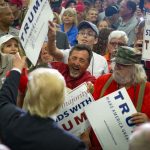 The legend has it that fake news played a crucial role in the 2016 US presidential election, especially in favor of eventual winner, Donald Trump. A new study from Princeton University suggests that may not be entirely true.
The legend has it that fake news played a crucial role in the 2016 US presidential election, especially in favor of eventual winner, Donald Trump. A new study from Princeton University suggests that may not be entirely true.
The researchers measured visits to dubious and unreliable websites in the period both before and immediately after the election using traffic data from a few thousand representative volunteers collected by YouGov Pulse.
The data suggests that less than half of Americans visited a fake news website, with such visits accounting for approximately 6% of all news consumed during the election period. There did appear to be distinct differences along ideological and partisan lines, however.
Partisan lines
For instance, there appeared to be a greater likelihood that untrustworthy content would come from conservative sites, with such content 5 times as likely as from untrustworthy liberal sites. Similarly, Trump supporters were around twice as likely to visit such untrustworthy sites as Clinton supporters.
The most prominent gateway to such untrustworthy content was undoubtedly Facebook, with more visitors starting their journey there than Google, Twitter or email. The data also suggests that fact-checking services had a limited role in directing people away from the fake news websites, and the misleading narrative they peddle. Just 44% of those who visited fake news sites had actually visited a fact-checking site, with practically none visiting content making specific claims about a questionable article they had consumed.
“These findings show why we need to measure exposure to ‘fake news’ rather than just assuming it is ubiquitous online,” the researchers conclude. “Online misinformation is a serious problem, but one that we can only address appropriately if we know the magnitude of the problem.”